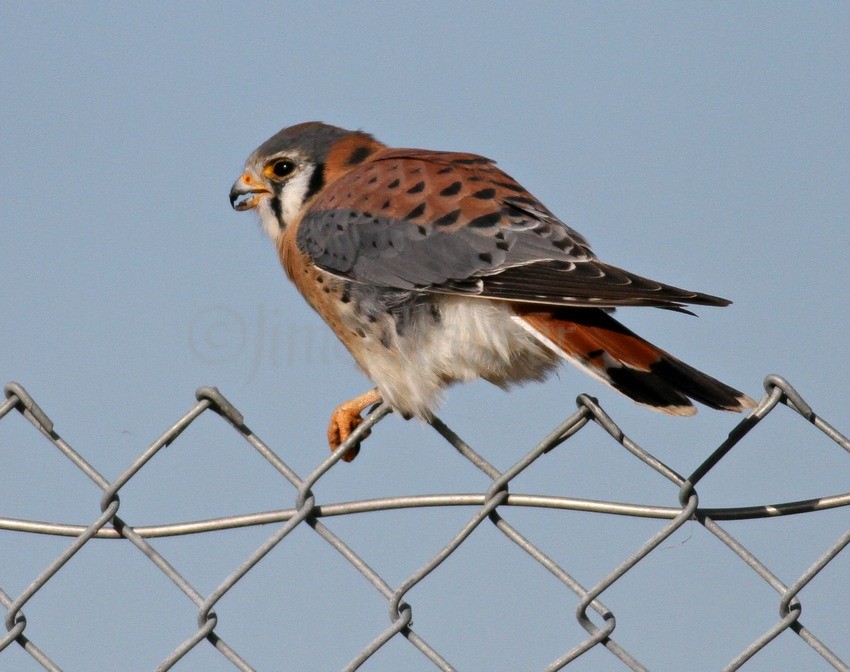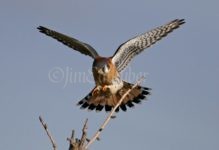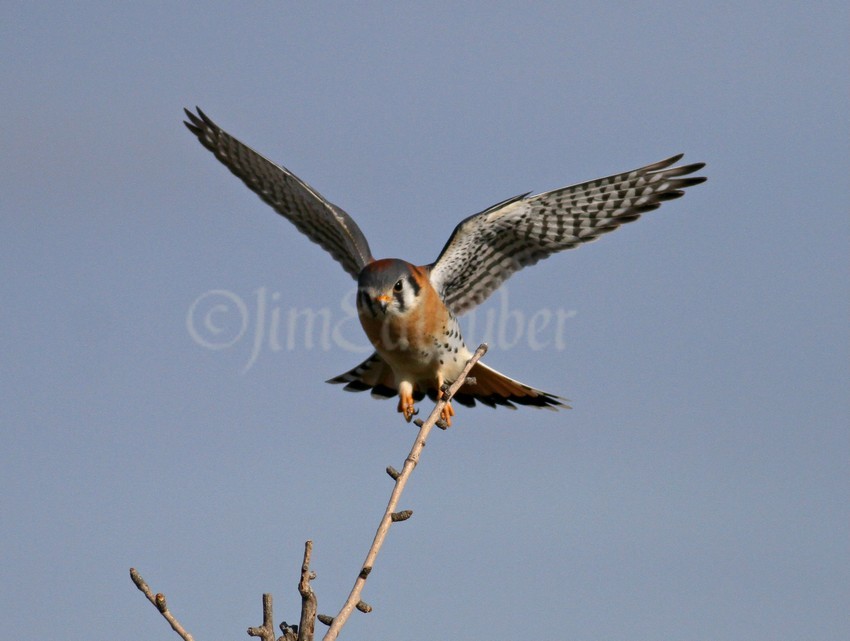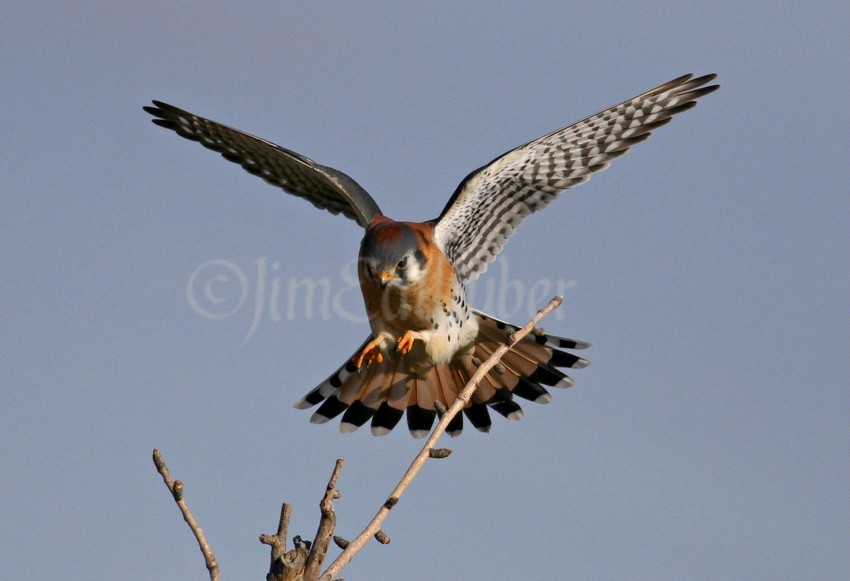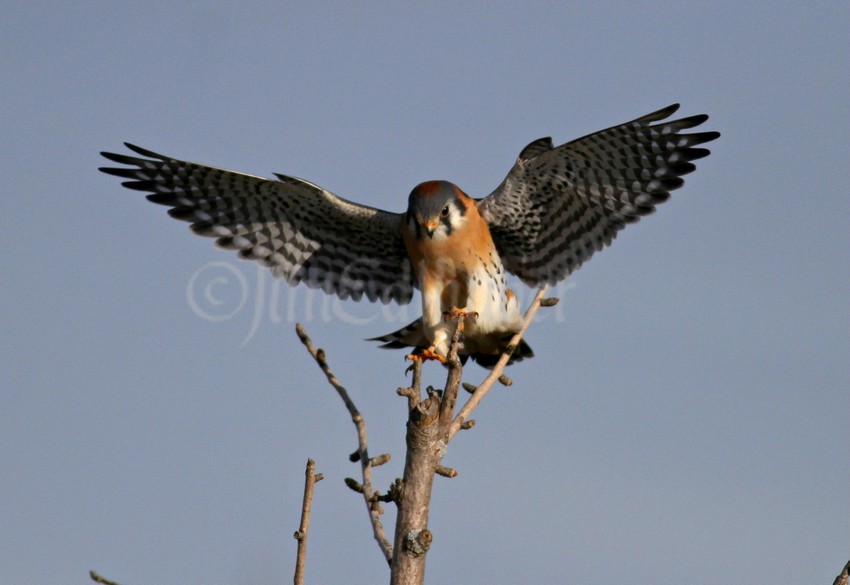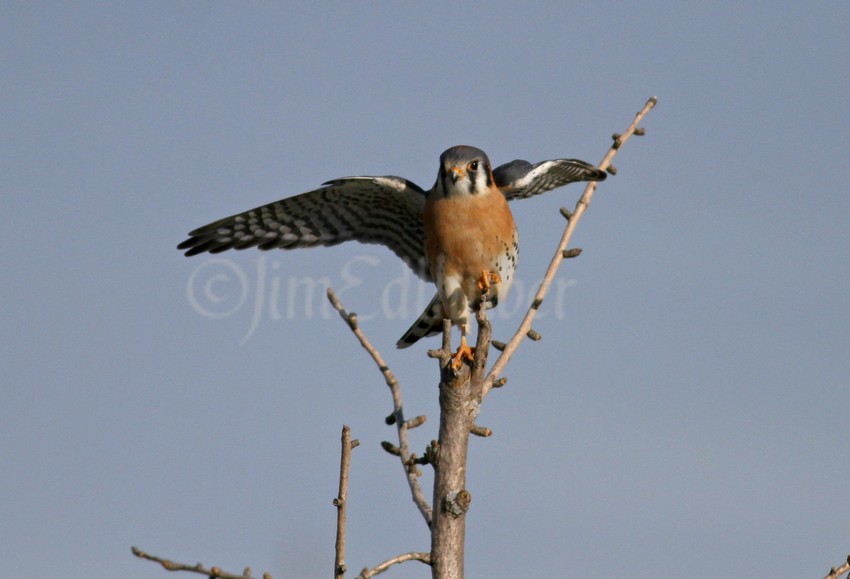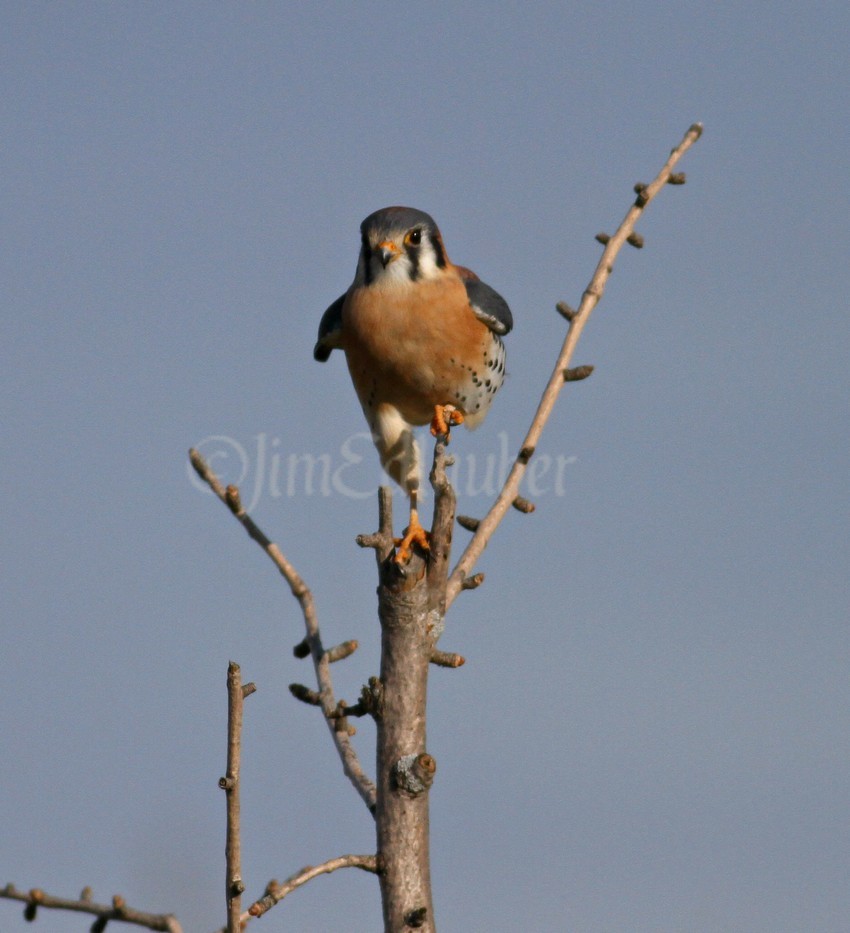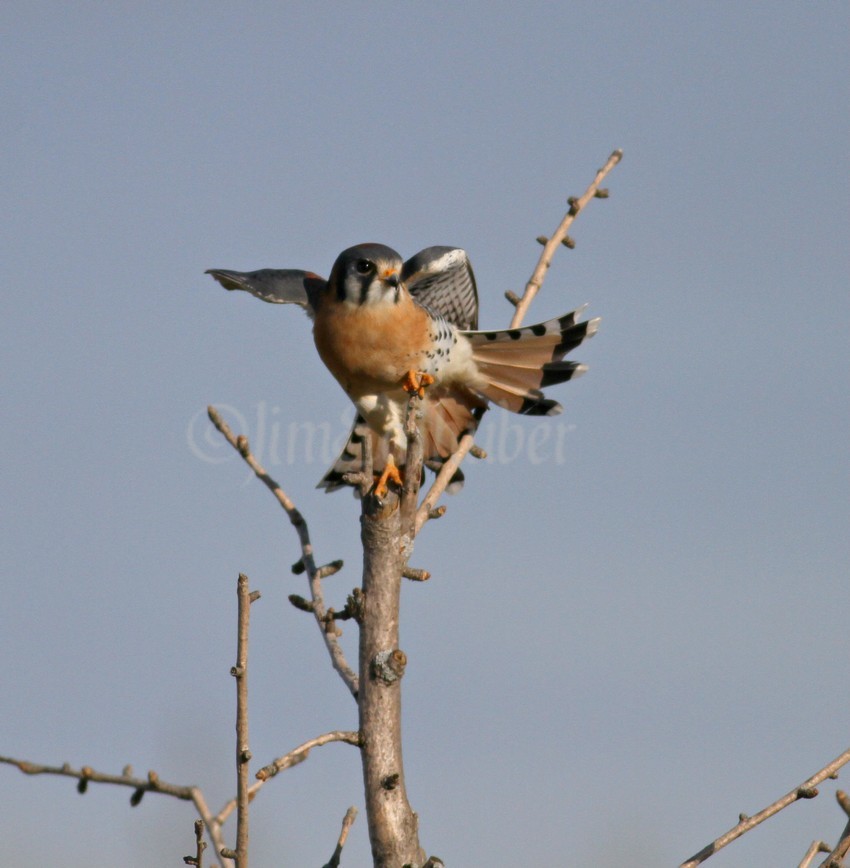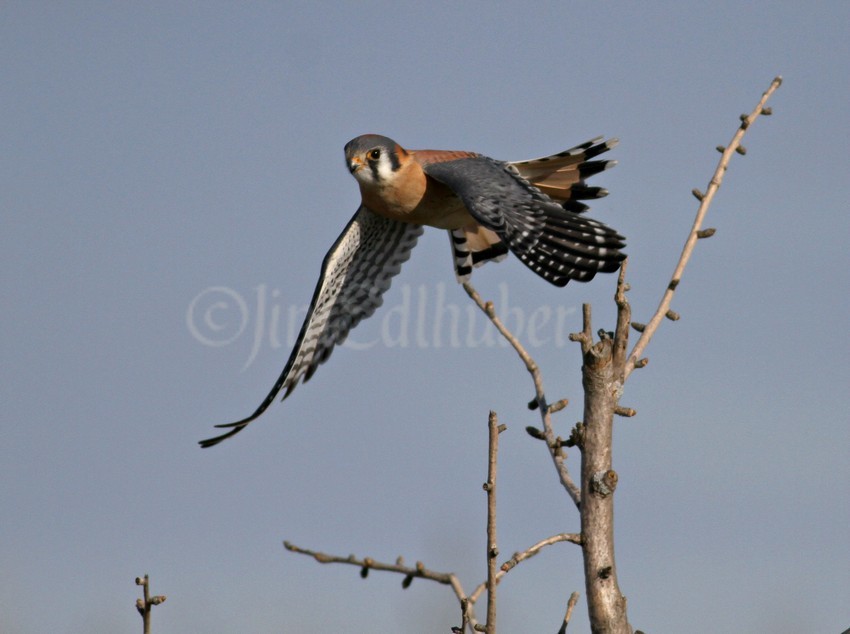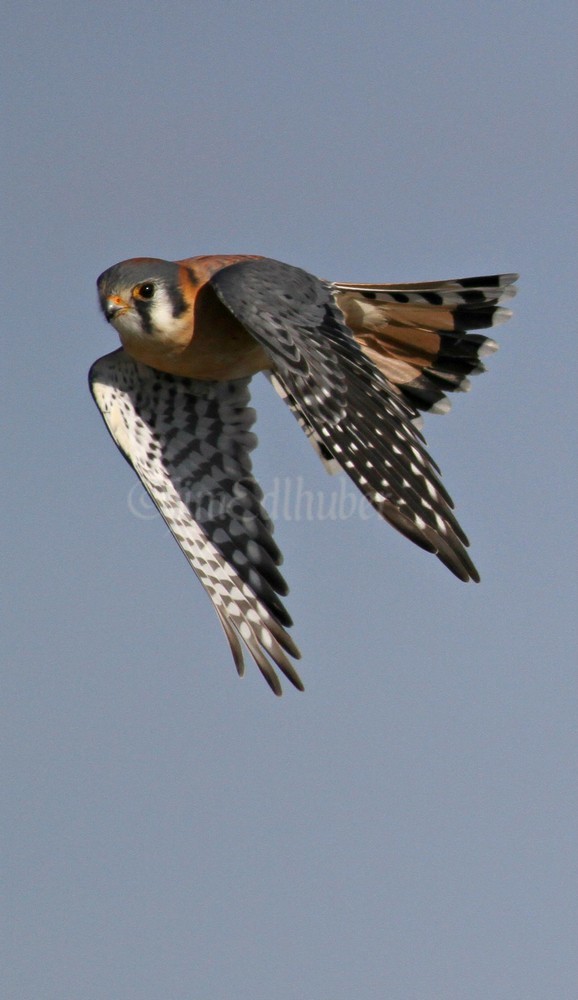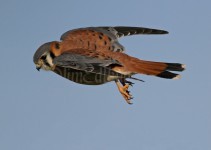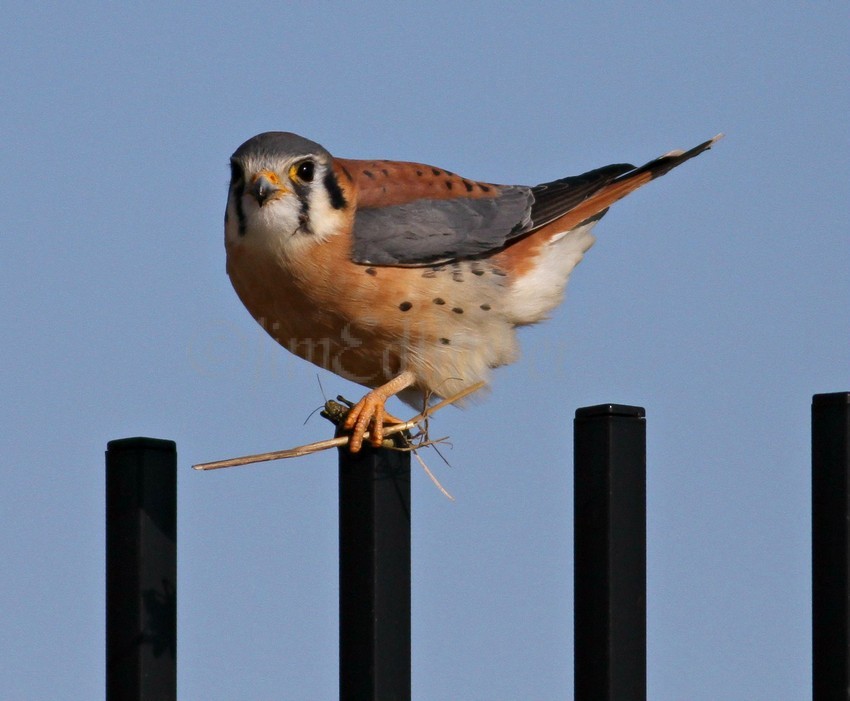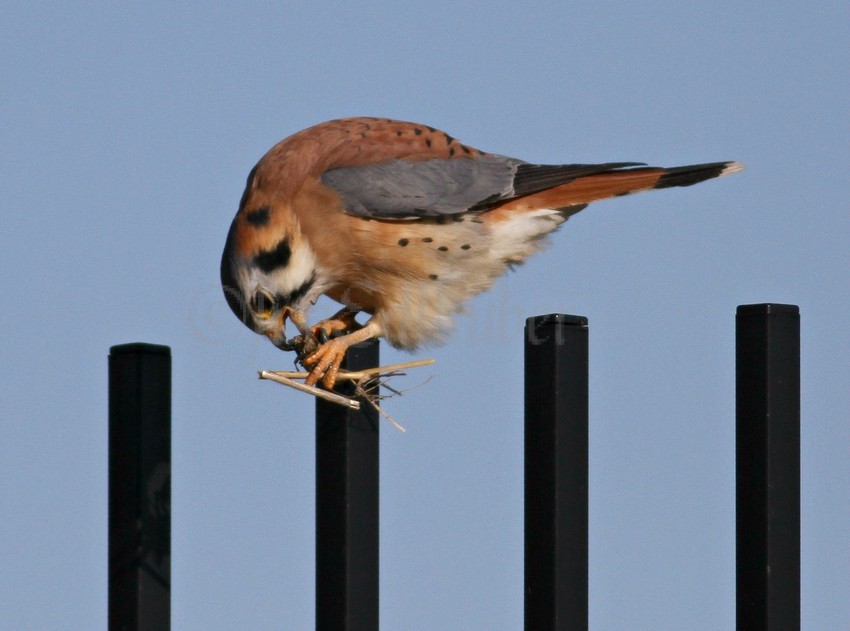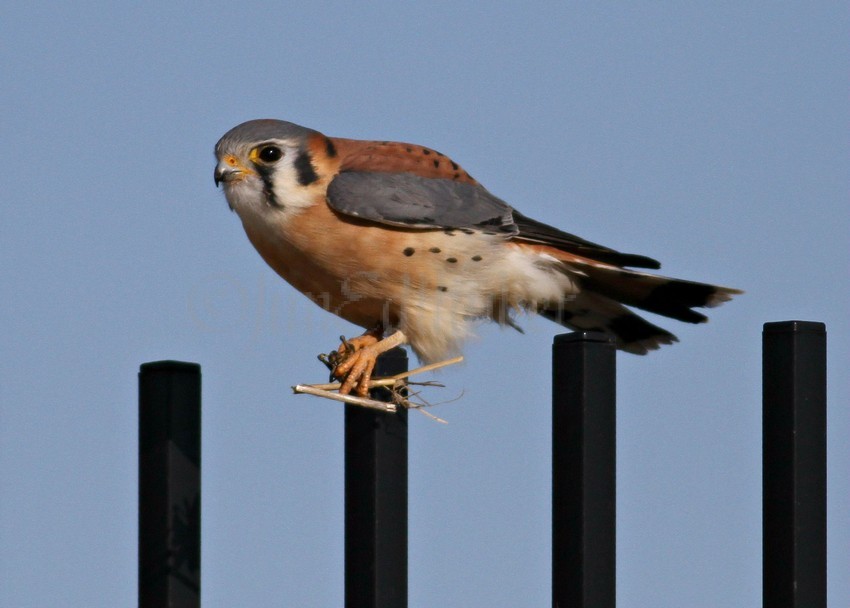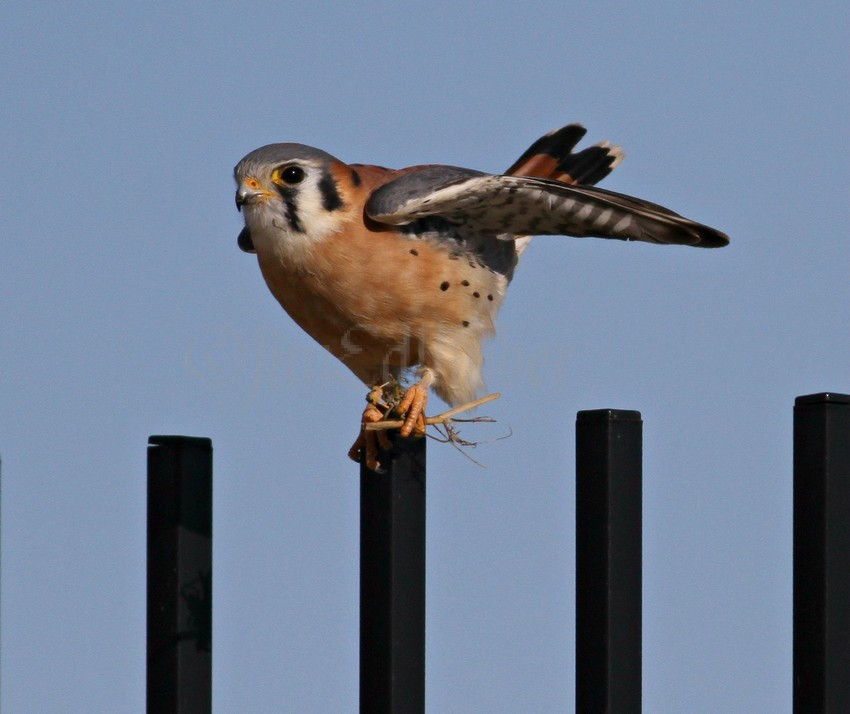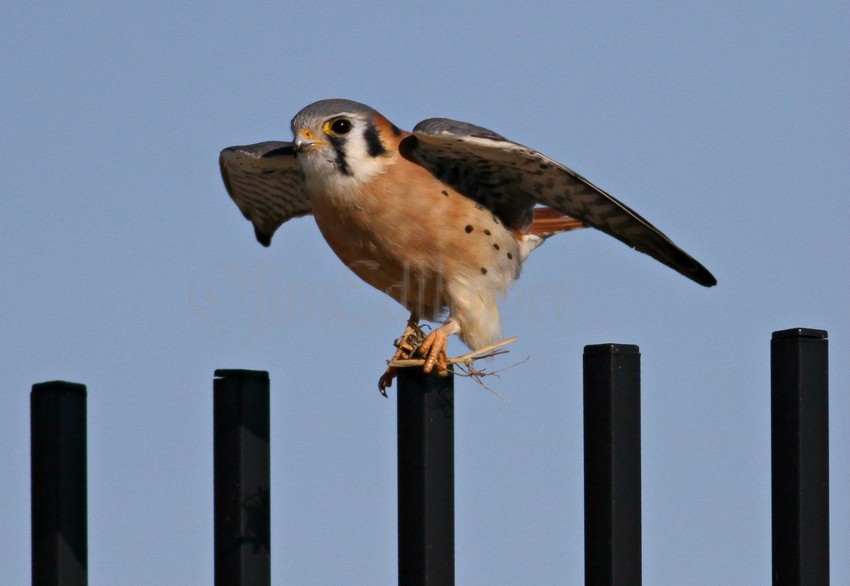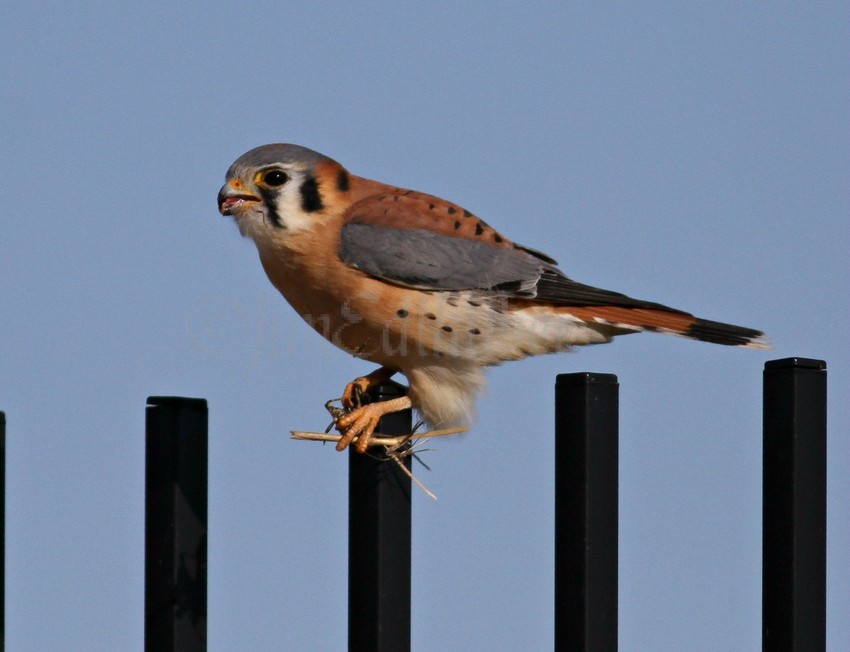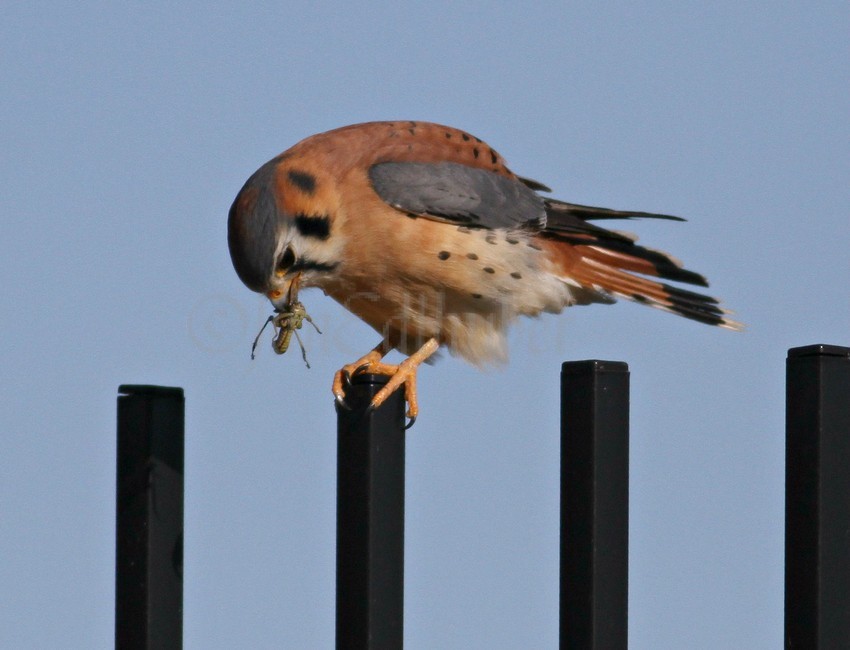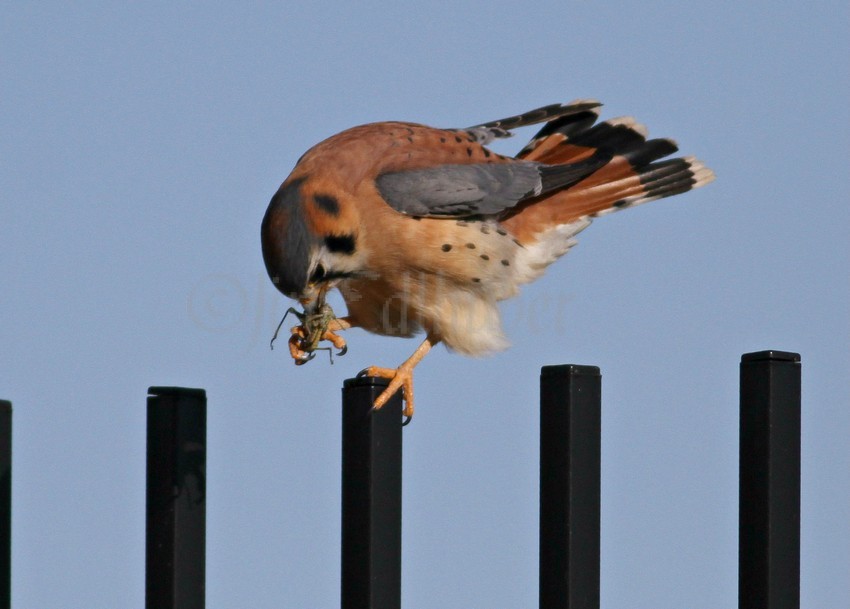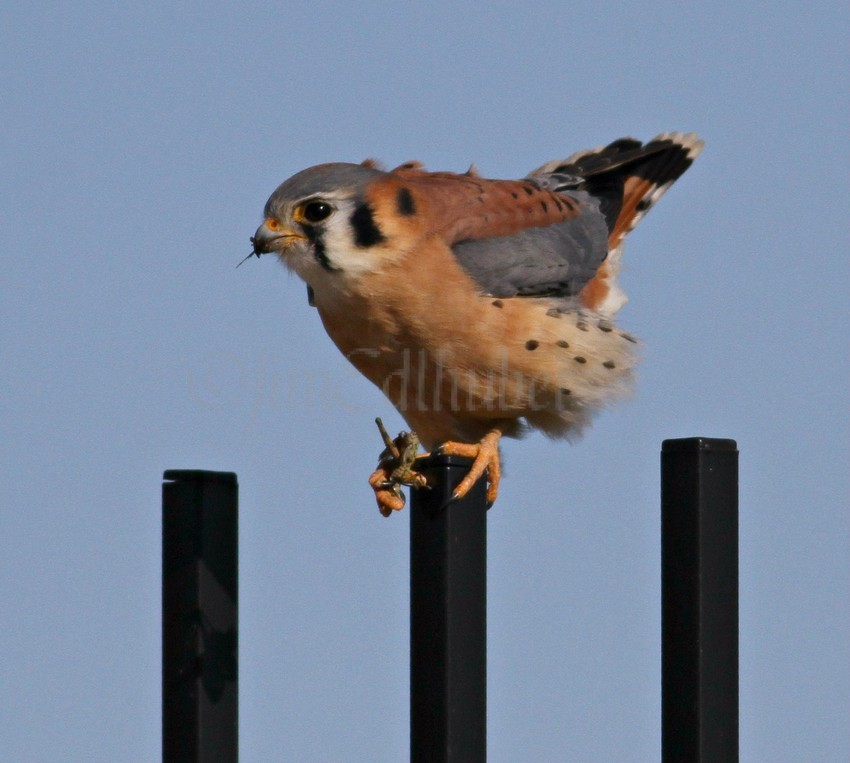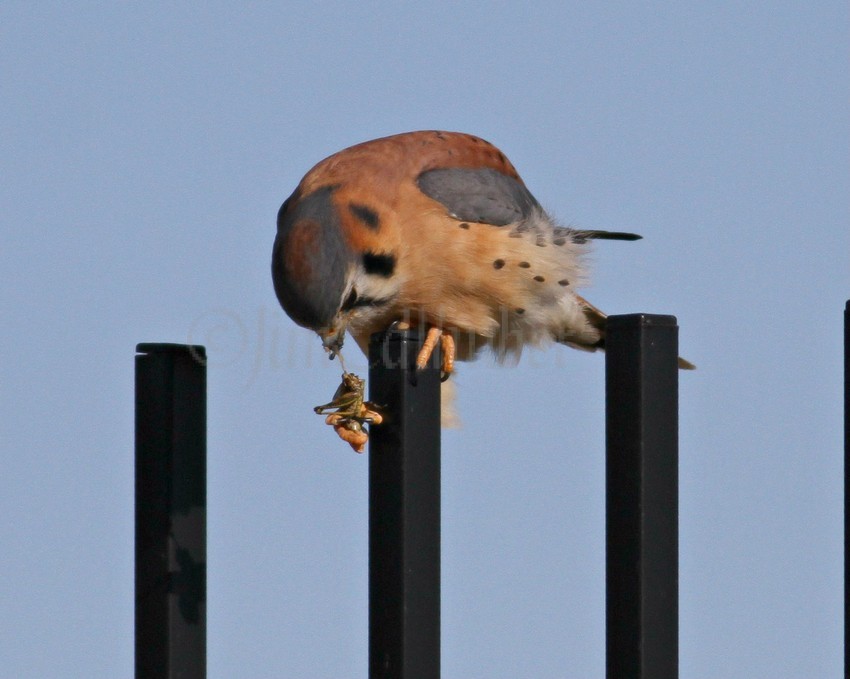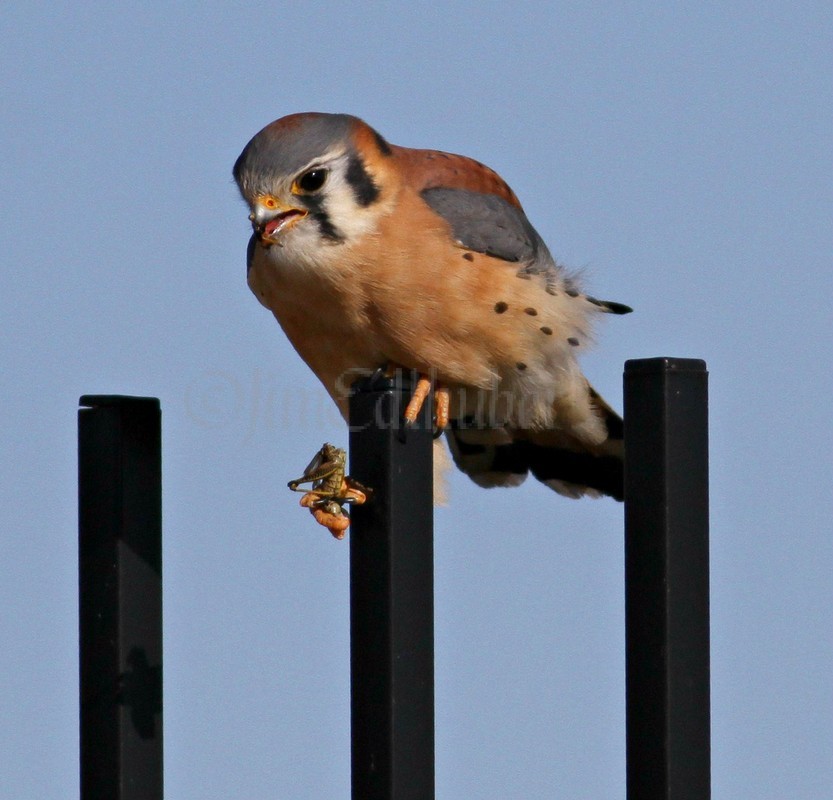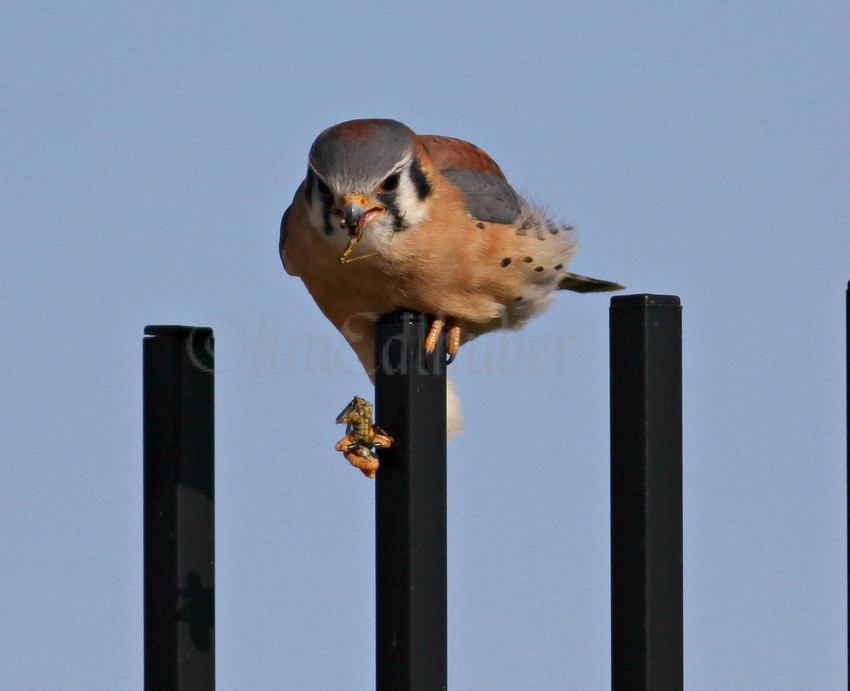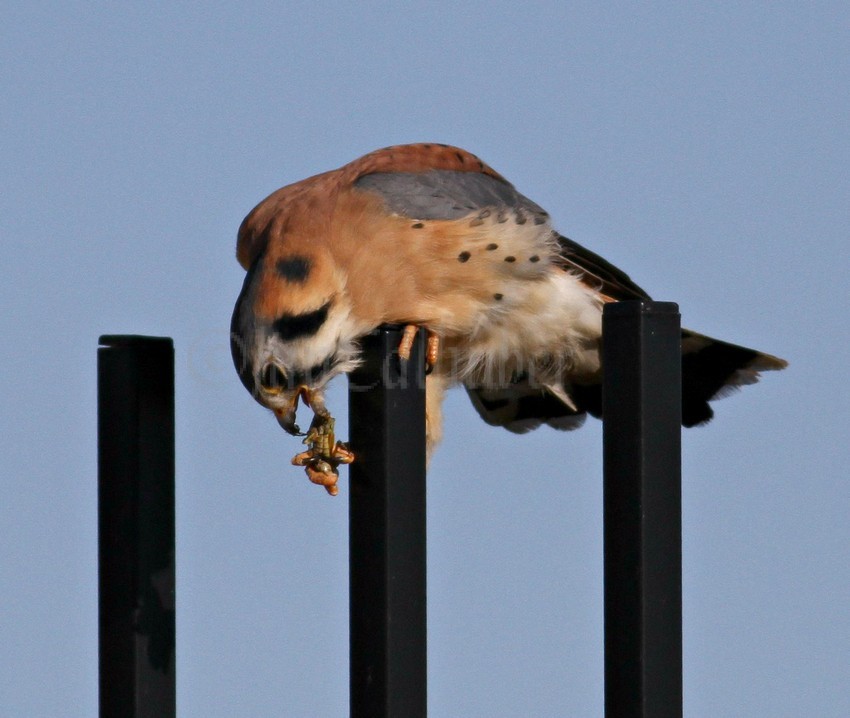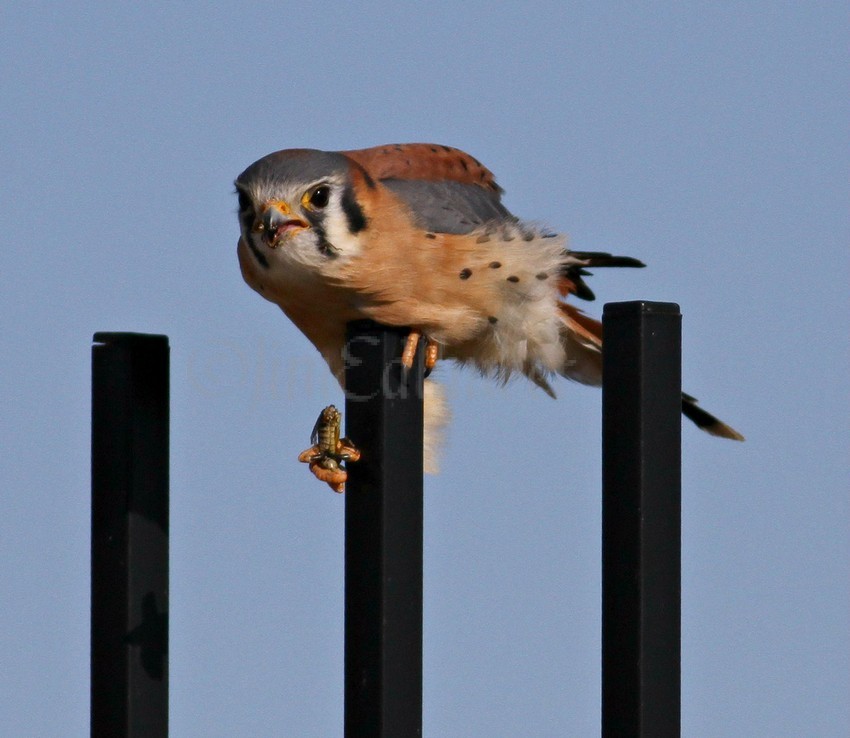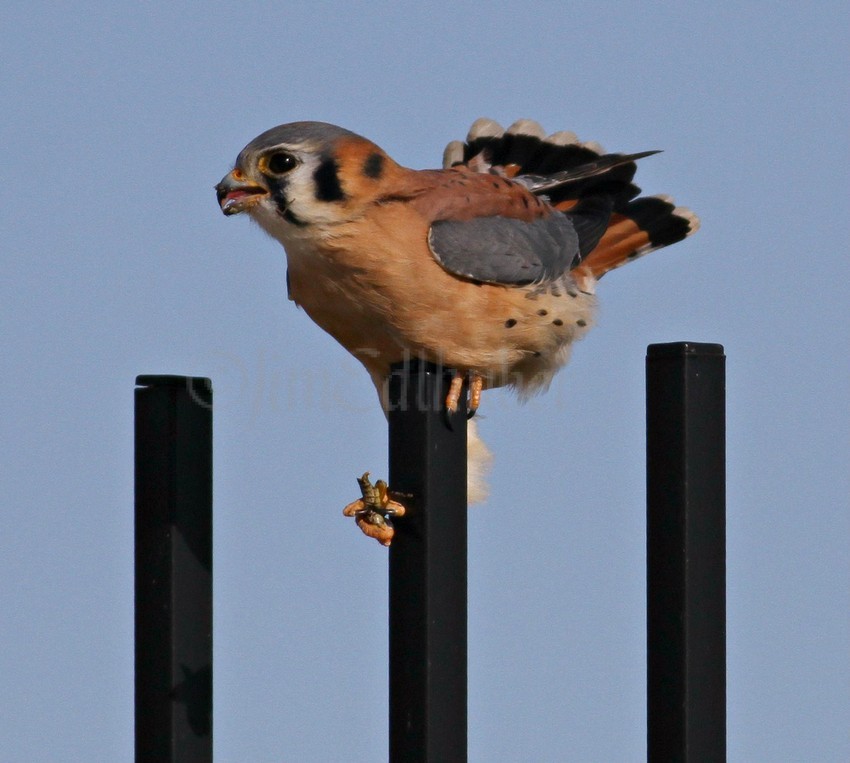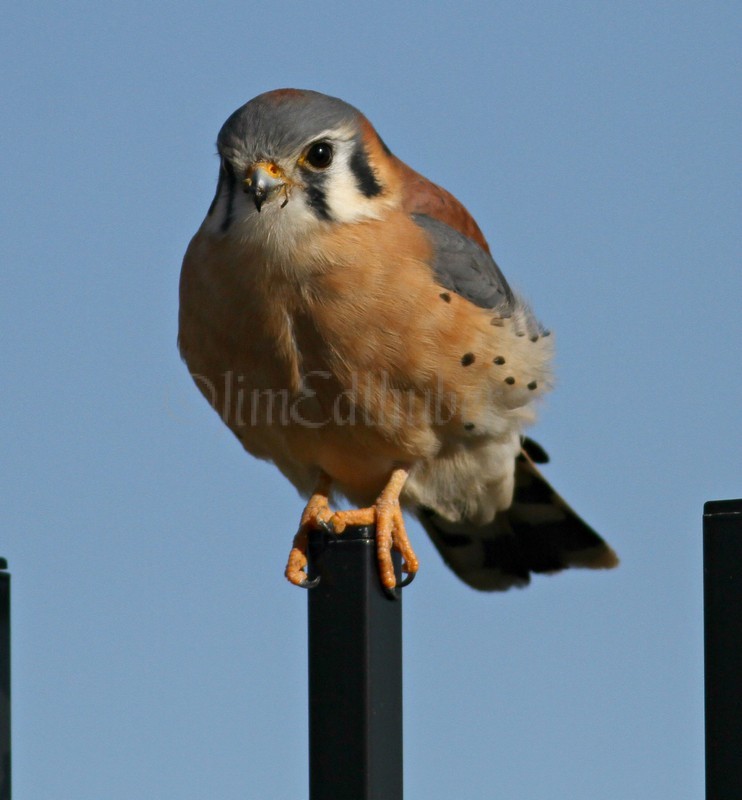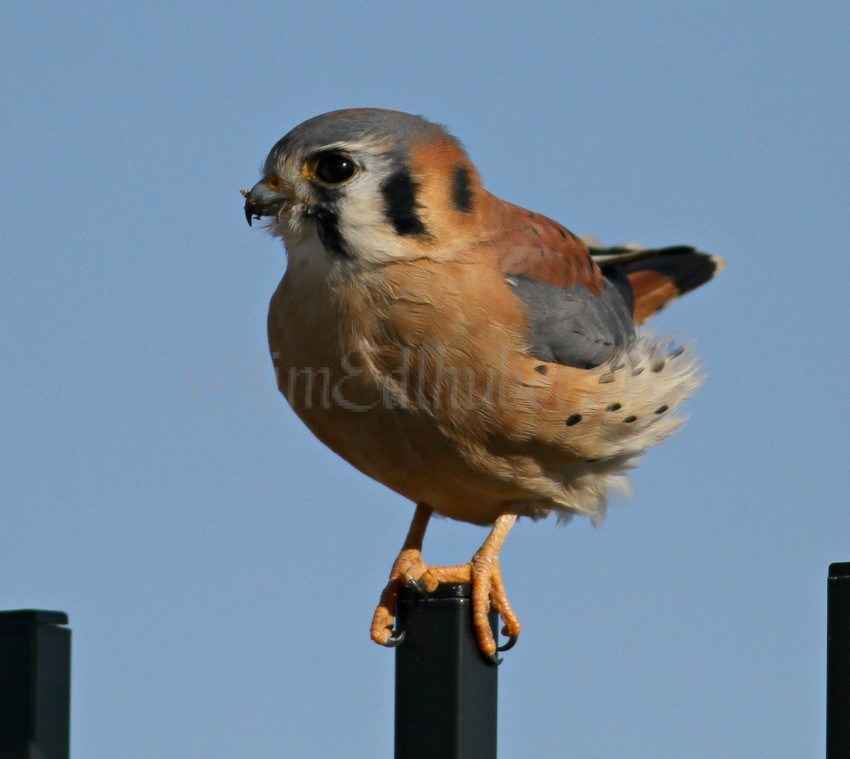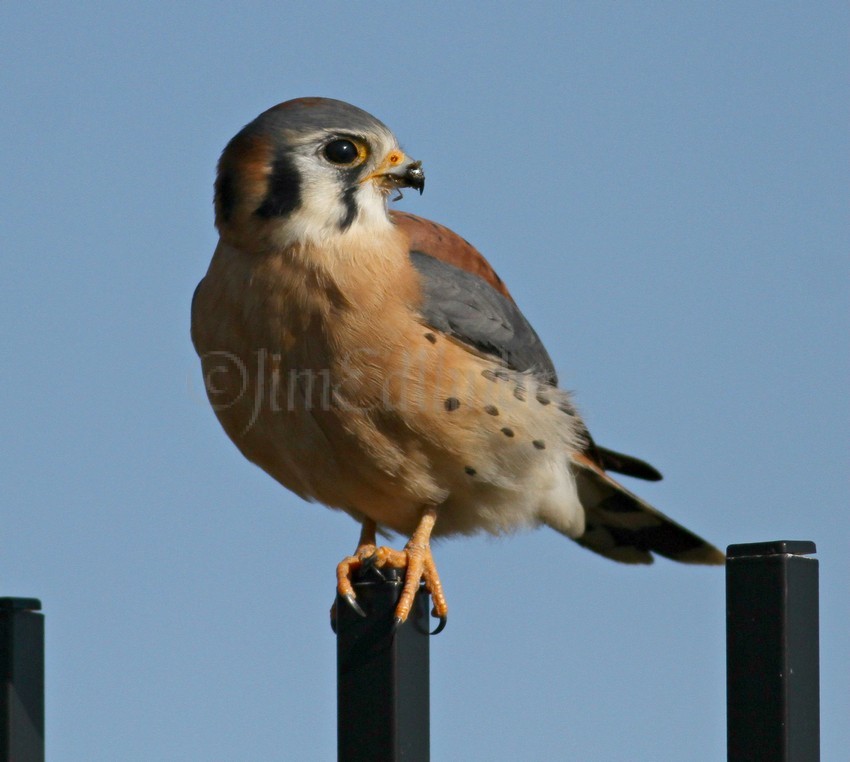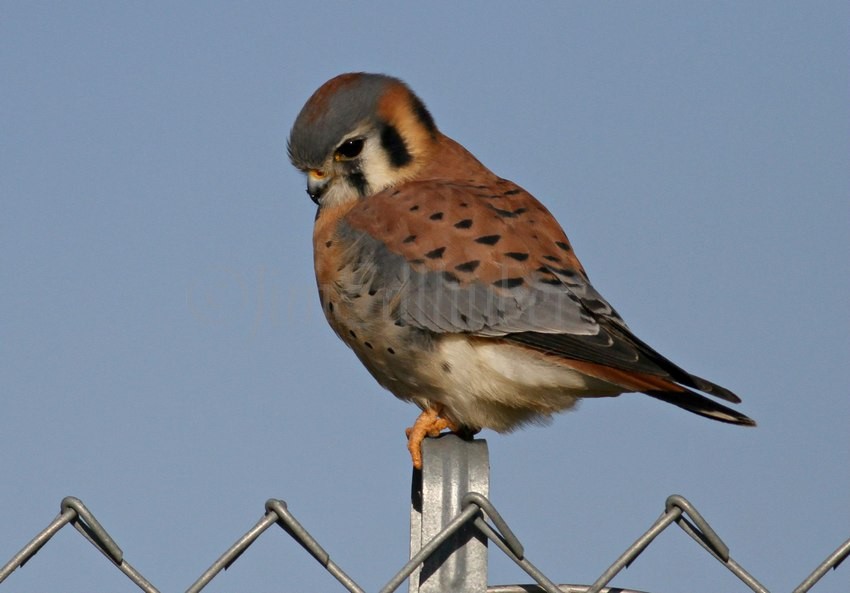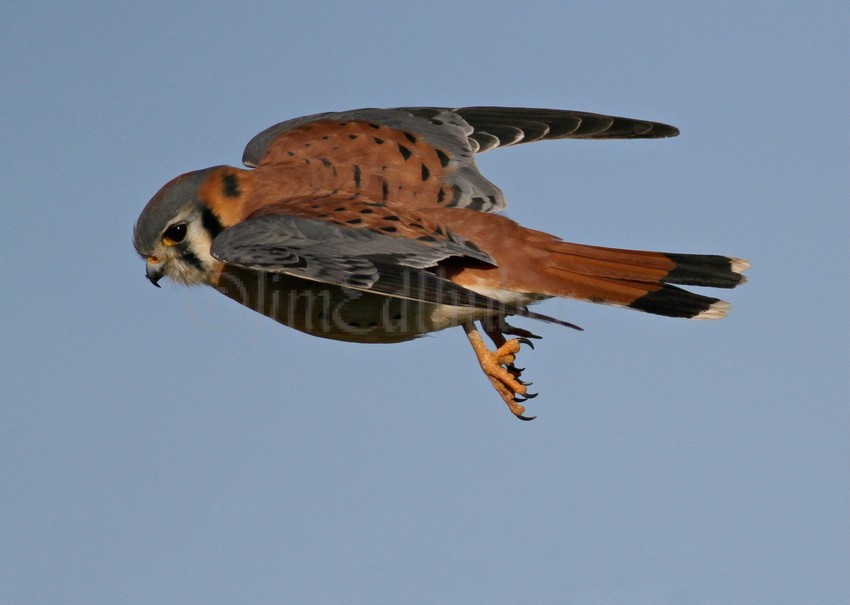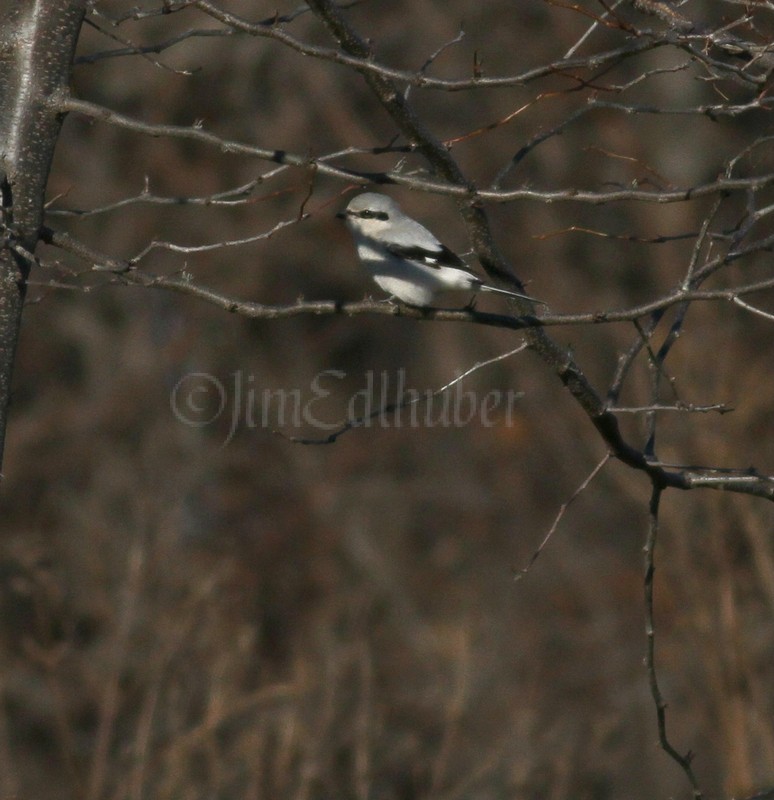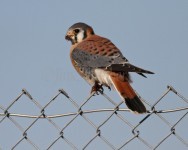
While birding this morning at the Lake Express on Milwaukee’s lakefront an American Kestrel, male was present. This species is commonly seen at this location or within a couple of blocks of the ferry. I watched it for 15 minutes and in that amount of time it flew to the ground 4 times and picked up fairly large insects and ate them. I would like to say the insect was a little bigger than a grasshopper and also had narrow clear wings. So not sure what the insect was. Bradford beach had one Juv. Great Black-backed Gull. The rest of the lakefront from Northpoint south to the Express I thought was very quiet. Images were taken on November 12, 2014.
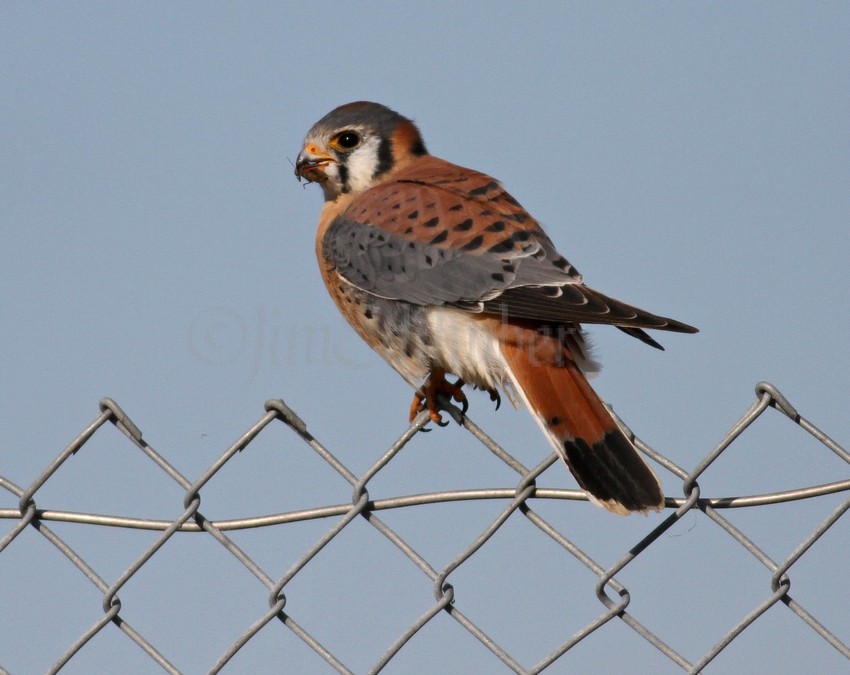
American Kestrel with large insect in bill.
American Kestrel
Binomial name: Falco sparverius
Category: Caracaras and Falcons
Size: 9” long, 22” wing span
Weight: 4.1 Oz.
Habitat: They prefer open areas of grasslands, meadows and deserts with sparse vegetation and trees. They usually are seen on top of a pole, posts, fence or on a telephone wire. On top of these posts, poles, etc the American Kestrels will face the wind and balance themselves.
Diet: Mice and voles are common foods for the American Kestrel. They also eat in insects such as dragonflies, butterflies, moths and grasshoppers. They have also been known to eat squirrels, gophers, bats, small birds such as House Sparrows, lizards and snakes. Prey is usually taken off the ground.
Nesting: Nest cavities are used with no nesting materials. Sometimes other birds nest cavities are used. Typically 4-5 eggs are laid that are white and light pink in color.
Cool fact: Smallest falcon in North American also called the “Sparrow Hawk”
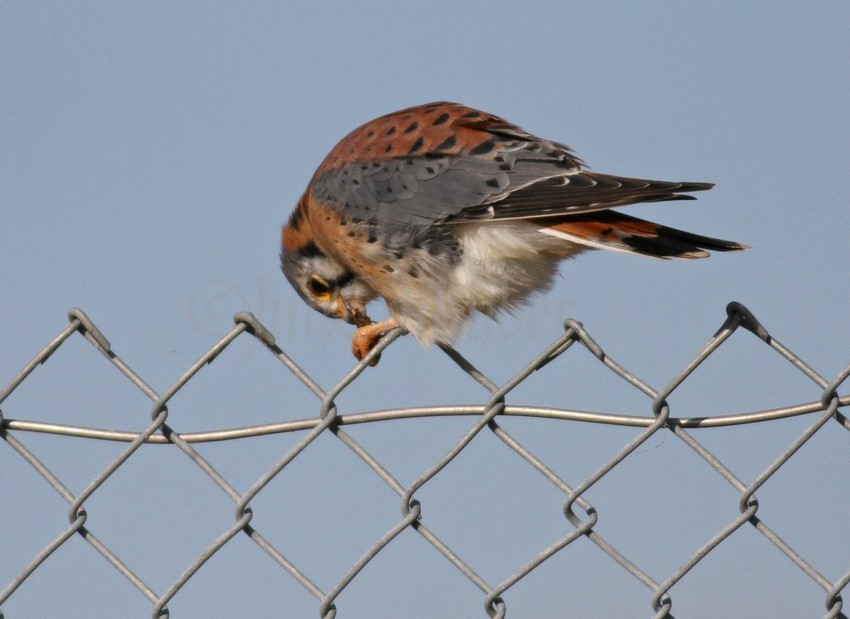
American Kestrel eating the insect.
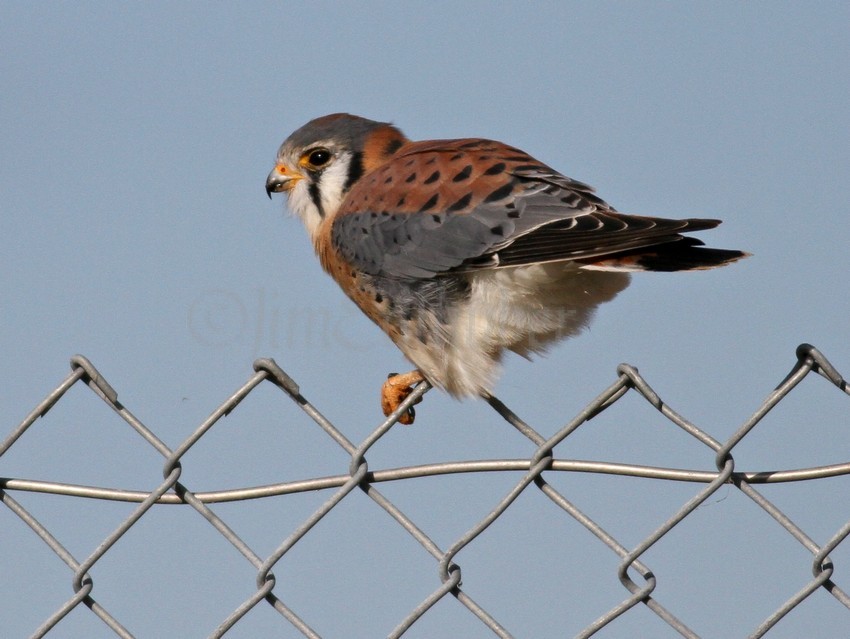
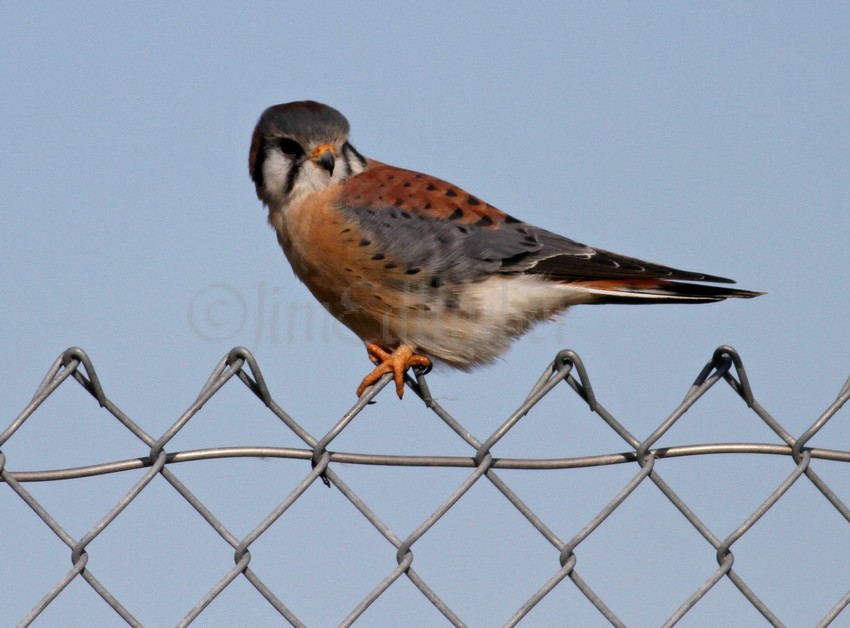
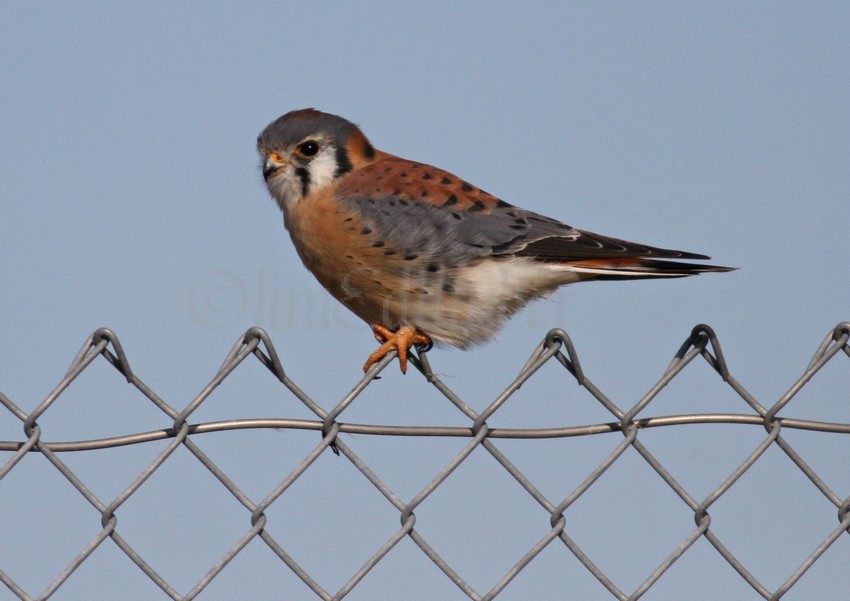
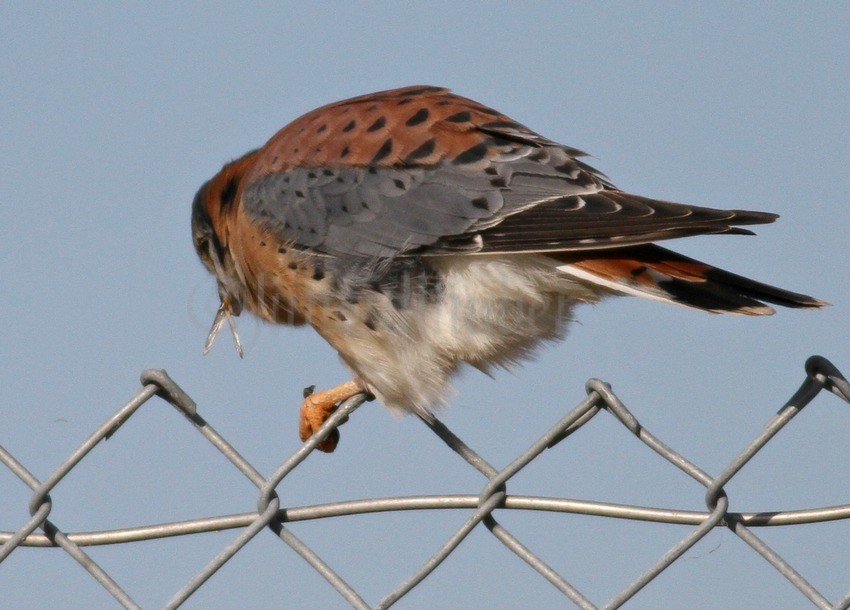
Doc shot for insect ID.
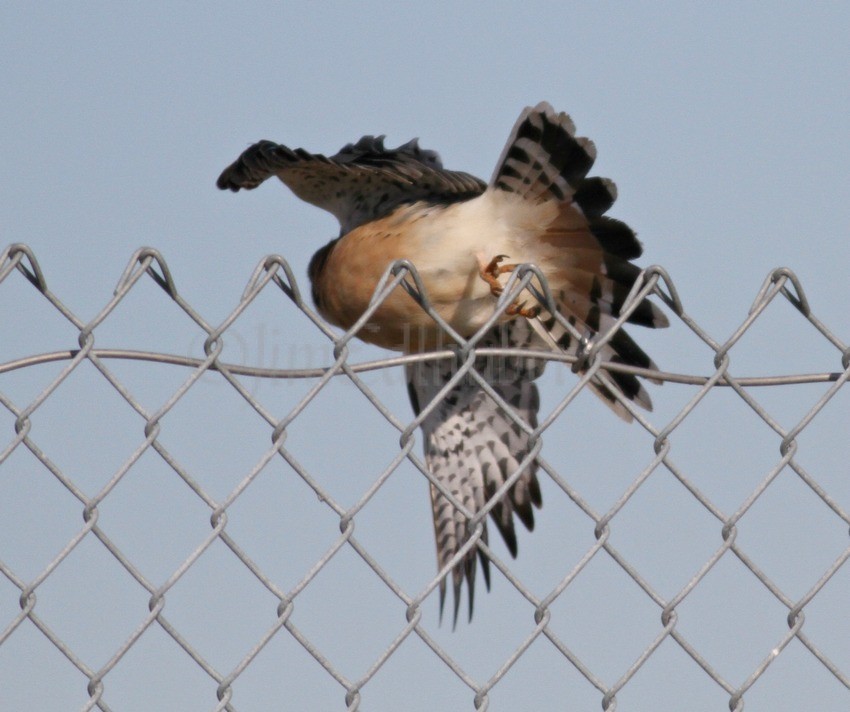
Doc shot for tail spread.
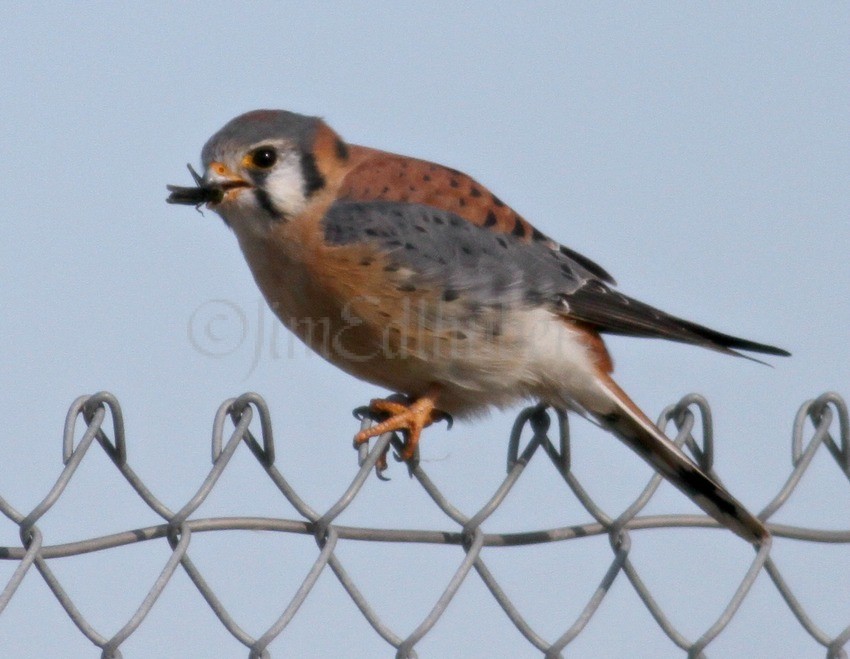
Doc shot for insect ID, grasshopper.
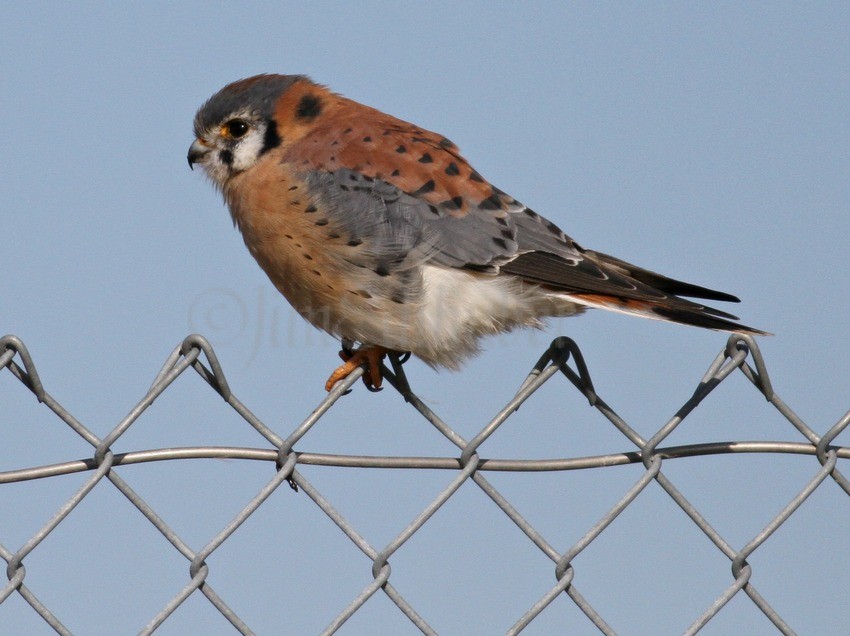
Hunting!
